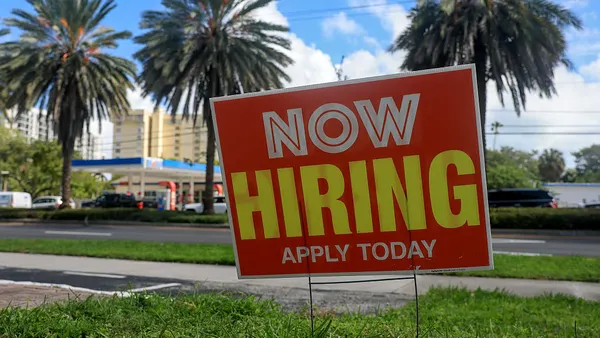Companies on the hunt for a new CIO have a laundry list of must-have traits.
CIOs need to be savvy leaders with business acumen and strategy running through their core. They cannot abandon the technology roots which propelled them to the executive level, with the skills required to translate external pressures to business stakeholders.
CIOs have to speak for the future of digital and help identify new revenue streams. There's also, of course, the ubiquitous directive to do more with less as budgets tighten and the economic impacts of the pandemic are felt.
When on the hunt for a new CIO, companies prioritize business skills and individuals who can work with other members of the executive committee to effectively lead the company.
What drives the overarching skills of the CIO is the objectives placed on their role. And when looking for a new executive, companies have emphasized technology, not business backgrounds. It inhibits a technology executive's ability to further advance in a company or ascend to a chief executive position.
If the executives have a high degree of functional requirement in the role — managing IT, costs, system performance — "you'll never see them move into that business role," said Ola Chowning, partner at ISG.
The executive's path instead is to eventually move into a more transformational focus, working to redesign business processes.
"The modern CIO needs to have as much, if not more, business acumen as [they do] technical acumen," Chowning said.
A distributed work environment has enhanced the need for CIOs to have emotional intelligence, with the ability for executives to adapt to what's going on with people around them. But conversational intelligence proves imperative too.
Conversational abilities are "big in any executive level leadership today, but it's a new muscle for many CIOs," Chowning said. "For many CIOs they were cost-center or back office — having a seat at the table was not as prevalent as you find it today."
Ford CIO, a case study
The recent news of Ford's CIO plans to retire and with a successor not yet named highlights the complexity of the CIO search and all that a company looks for in an executive.
The CIO role at Ford is no different than it is at any other Fortune 50 company, said Chris Patrick, global head of management consulting and executive search firm Egon Zehnder's Technology Officers Practices.
"It's complex, it's global," Patrick said. "The CIO of the past is going to be very different than the CIO of the future for Ford."
The size of the company is significant, but also the overlaying dynamics of the automotive industry, which is relying on technology to drive innovation and enable strategy.
Previous CIOs at Ford would have focused on operational efficiency, according to Patrick. All of these companies are going through massive organizational and technology transformation; those back office CIOs find themselves in the front, helping to shape and drive strategy.
But a CIO coming into a company like Ford doesn't require familiarity with the industry. Outside perspective can prove valuable as a company looks to shape operations. Industry experience can also help the executive think through business problems, and augment problems technology can help solve.
"Historically most industries felt very comfortable looking in their own industry," Craig Stephenson, senior client partner, managing director of the North America CIO/CTO Practice at management consulting firm Korn Ferry.
But in the last 24 months, that has started to ease, though changing industries can bring a whole new challenge, particularly if the business is in a regulated space, Stephenson said.
For a new CIO, industry standards define what companies want. For executive technology leadership, companies look for these traits, according to Stephenson:
-
Technology leadership: In addition to driving operational excellence, this has taken on a great emphasis for companies "because there's so much to be done. And because there's so much to be accomplished and there is a lot of risk associated with that technology modernization journey," he said.
-
Enterprise leadership: This includes functional credibility, business acumen and the ability to communicate with the board. These executives will also align across departments and work with key business stakeholders.
-
Organizational capabilities: Planning 12-24 months in advance, technology leaders need to be comfortable with ambiguity and serve as strong change leaders. They will also collaborate across functions and lines of business.
-
Digital leadership: These executives will provide vision and help organizations evolve their business models. There is also focus on digital capabilities, customer channels and data driven outcomes.
Names matter
While a CIO might thrive as a technology leader, there is not a clear line of succession to taking on the CEO job.
"Technology leadership is one that remains a bit of a challenge because technology leaders will take a number of different paths to ascend to the top role," Stephenson said.
Part of the challenge is in rethinking what CIOs do, with emphasis on business engagement instead of just operation efficiency.
CEOs historically come from operations, finance, sales and marketing, according to Patrick. It's going to take time for CIOs to impact and influence the business before they're truly seen as credible CEO candidates.
But momentum is in their direction, he said.
The transition to the top executive may require new titles for CIOs to break away from historical associations with the back office CIO. Some companies have already made the change. Walmart has an "elevated" chief technology and development officer reporting to the CEO. And Bank of America has a chief operations and technology officer.
Chowning recently worked with an organization that hired a chief executive of technology, which they labeled as the chief digital innovation officer. The title was "taxonomy wise, to kind of shake the perception of what would have traditionally been seen in a CIO role," Chowning said.
Their CIO flipped too into a role more akin to a chief technology office. "They hired someone who has far more business savviness and recognizes the digital, external layers of technology," Chowning said.
The company changed the name of the role to help people recognize the technology leader was representing a different skill set.
The same thing happened at Pitney Bowes. The company still has a CIO, but the executive is very back-office technology oriented, Chowning said. "They have a chief innovation officer who actually is the one who is business savvy, external focused."





















